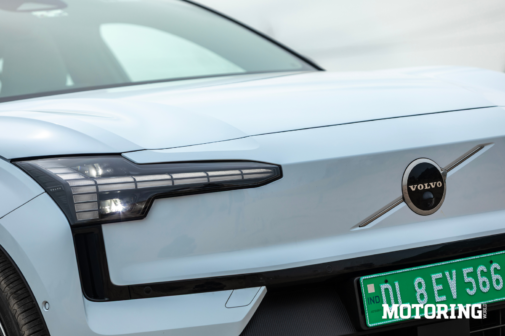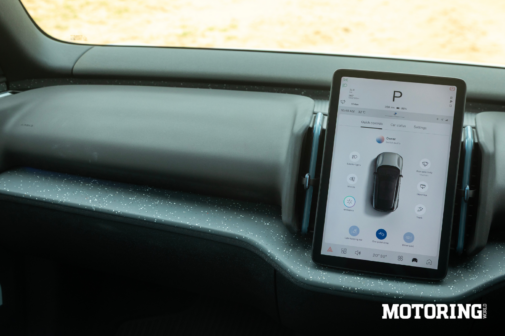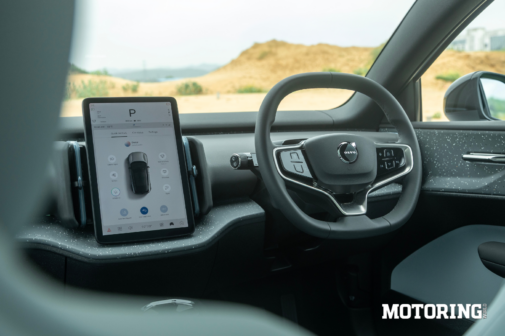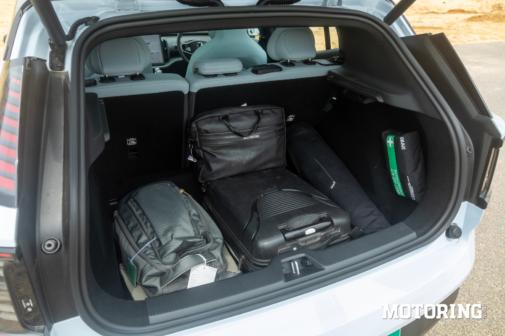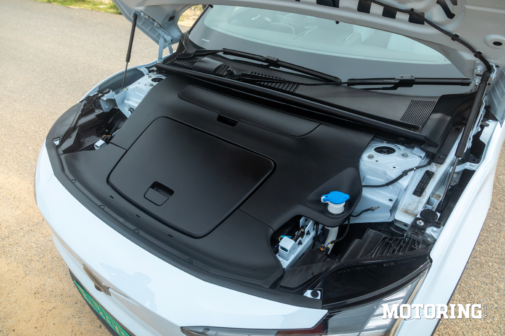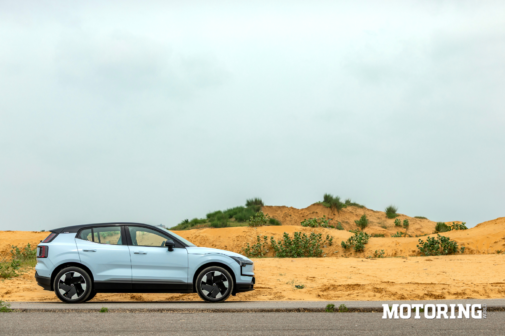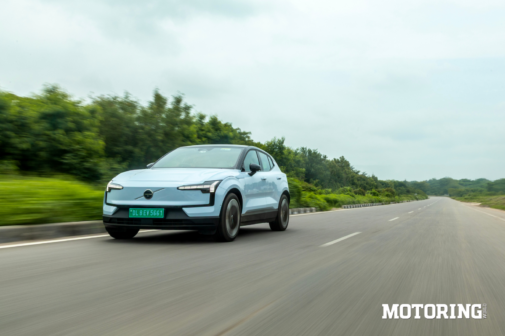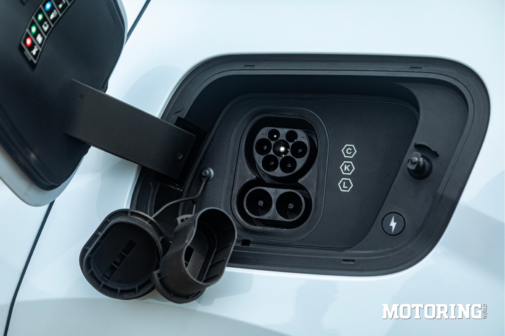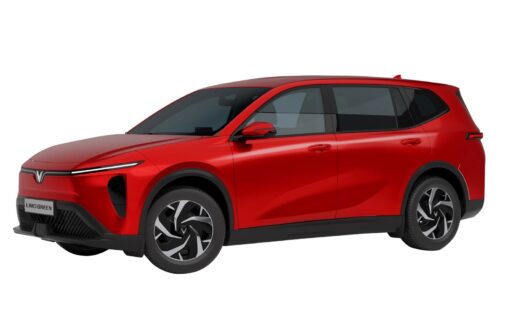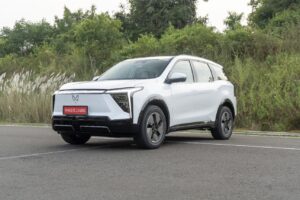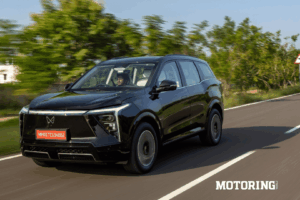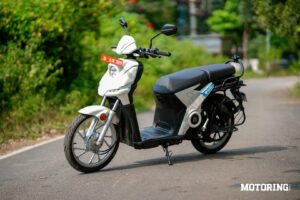Doubt is fashionable in the electric car world. Governments keep moving the goalposts, carmakers hedge their bets, and buyers wait for someone else to blink first. Volvo, meanwhile, is acting like none of that noise exists. It’s circled a date on the calendar for going all-electric and isn’t looking back. The EX30 is the clearest signal yet, a compact SUV that’s less about chasing trends and more about making the EV future feel inevitable.
While Volvo already sells electric models in India, the EX30 is different. It’s the brand’s first EV designed from a clean sheet, with no hand-me-down parts from a petrol sibling. Built on the Sustainable Experience Architecture (SEA) platform, it benefits from the low, wide stance and short overhangs that only a dedicated EV chassis can offer.
The EX30 wears its EV identity with confidence. No fake grille, no pretending to be something it isn’t, just a clean, handsome front end that’s all the better for it. The designers deserve credit: the EX30 is striking and immediately likeable, channelling the signature Swedish charm we’ve come to expect from modern Volvos. Think Thor’s Hammer headlights, pronounced shoulder lines, and high-mounted rear lights, all wrapped in proportions that cleverly disguise its boxy SUV form with a contrasting roof.
Inside, you get a mix of clever thinking and obvious cost-cutting, sometimes in the same feature. Take the window switches: just two up front, controlling the front glass by default, and only operating the rears if you press a toggle. Logical most of the time, but a faff when you want the back windows down in a hurry. In the same minimalist spirit, there’s no driver display; your speed sits in the corner of the central touchscreen instead.
The trim on my test car was a pleasant grey with black and white flecks. I liked it until someone pointed out it looked like a posh kitchen worktop, and suddenly I couldn’t unsee it. If you’re into Scandi kitchen design, you’ll feel right at home.
The 12.3-inch touchscreen controls almost everything, including the glovebox, fog lights, and headlights. And that’s a problem. Switching the headlights on is a three-step saga: screen, settings, headlight menu, then confirm on the steering wheel. Honestly, I think launching nuclear missiles requires fewer steps. Climate controls do at least stay anchored at the bottom of the screen, but headlights deserve single-touch access. Volvo could, and probably will, fix this with an over-the-air update.
Not everyone will like the speed readout’s location, but I got used to it quickly and never felt the need for a head-up display. The Google-based navigation and voice controls work brilliantly, the display is crisp, and the pared-back cabin aesthetic feels very Swedish. That extends to the ambient lighting themes: Midsummer, Northern Lights, Archipelago. The pièce de résistance, though, is the 1040W nine-speaker Harman Kardon sound system. A massive soundbar stretches across the dashboard, handling music, alerts, and even directional indicator clicks — the latter modelled on a snapping twig, which is oddly satisfying.
Practical touches include slide-out cupholders that adjust for one or two drinks, a Tesla-style storage tray with twin USB-C ports, and a wireless charger. The back seats get their own USB-Cs and a small slide-out tray, but the minimalism borders on stingy: no armrest, limited legroom, and a modest 318-litre boot. A false floor hides the charging cable, and there’s a tiny frunk if you pack light. Fold the rear seats and you’ll have 904 litres — though you’ll need to remove any passengers first.
For India, the EX30 comes only in the Single Motor Extended Range variant. It packs a 69 kWh battery sending power to the rear wheels, with a claimed range of 480 km. It’s quick too: 272 bhp, 35 kgm of torque, and 0–100 km/h in 5.7 seconds. Obviously, I had to see if those numbers held up.
On the road, the EX30 defies expectations. I was braced for heft and numbness, but it feels light on its feet. The straight-line pace is addictive, even if the novelty fades without gears to row through or an engine note to stir the soul. The steering is well-weighted if not brimming with feedback, and the car stays flat through bends, with enough compliance to shrug off potholes. One-pedal driving is superb, making the brake pedal largely redundant in town. It’s quiet enough to hear what passes you, even if wind and tyre noise intrude more than you’d expect.
Now, you’d expect a sensible Volvo family EV to be a little lukewarm on twisty roads, but it’s surprisingly entertaining. It flows neatly from bend to bend, and while the steering isn’t dripping with feel, it still lets you play enough to feel involved. The EX30’s pace will happily pull you from apex to apex, and you might even find yourself heading out for a drive just because. As a car to get in and drive, it’s excellent; you’ll also get out feeling relaxed and drama-free at least from the driver’s seat.
Passengers get a different story. The floor is high, it has to be, to give it that SUV stance and hide a chunky battery. The driver, unless they’re very tall, won’t notice. Everyone else will. Front or back, taller passengers will find their knees higher than they’d like, and after an hour or so, happiness levels drop. They might also find the ride a little firm, though it feels fine from behind the wheel.
What it lacks is character, that intangible spark that makes you take the long way home. Even in Single Motor Extended Range form, it accelerates like a sports car. Still, without the soundtrack or shifting drama, it can feel a little flat.
As for charging, Volvo quotes a fast charge time of 28 minutes for the EX30 Single Motor Extended Range RWD Ultra, from 10-80 per cent SOC, at up to 157 kW. With its 69 kWh battery (64 kWh usable), Volvo states that a full charge on an 11 kW plug will take approximately 11.5 hours.
The EX30 is Volvo doing what it does best: clean design, clever details, and calm confidence, but with a proper turn of speed. Ideally, it should land in India somewhere around ₹45 to 48 lakh, where it would seriously rattle the premium EV crowd.
It’s not a chauffeur-driven car by any stretch. The rear seat space is too tight for that, and if you plan to spend most of your time in the back, there are better options. Up front, though, it’s far more fun to drive than a BMW iX1, with sharper responses and a lighter feel. The trade-off? Less rear comfort, and not quite as playfully oddball as the Mini Countryman Electric.
If you want a compact EV that’s stylish, quick, and just a bit different without shouting about it, the EX30 nails the brief. Just be ready to do the driving yourself, it’s happier that way.
AUTODATA
Volvo EX30POWERTRAIN
Battery:
Max Power:
Max Torque:
Range:
69 kWh
272 bhp
35 kgm
480 km (claimed)
TYRES
F/R: 245/45 R19
DIMENSIONS
L/W/H (mm):
Wheelbase:
Kerb Weight:
Ground Clearance:
4233/1838/1550
2650 mm
1850 kg
NA
PRICE
TBA











